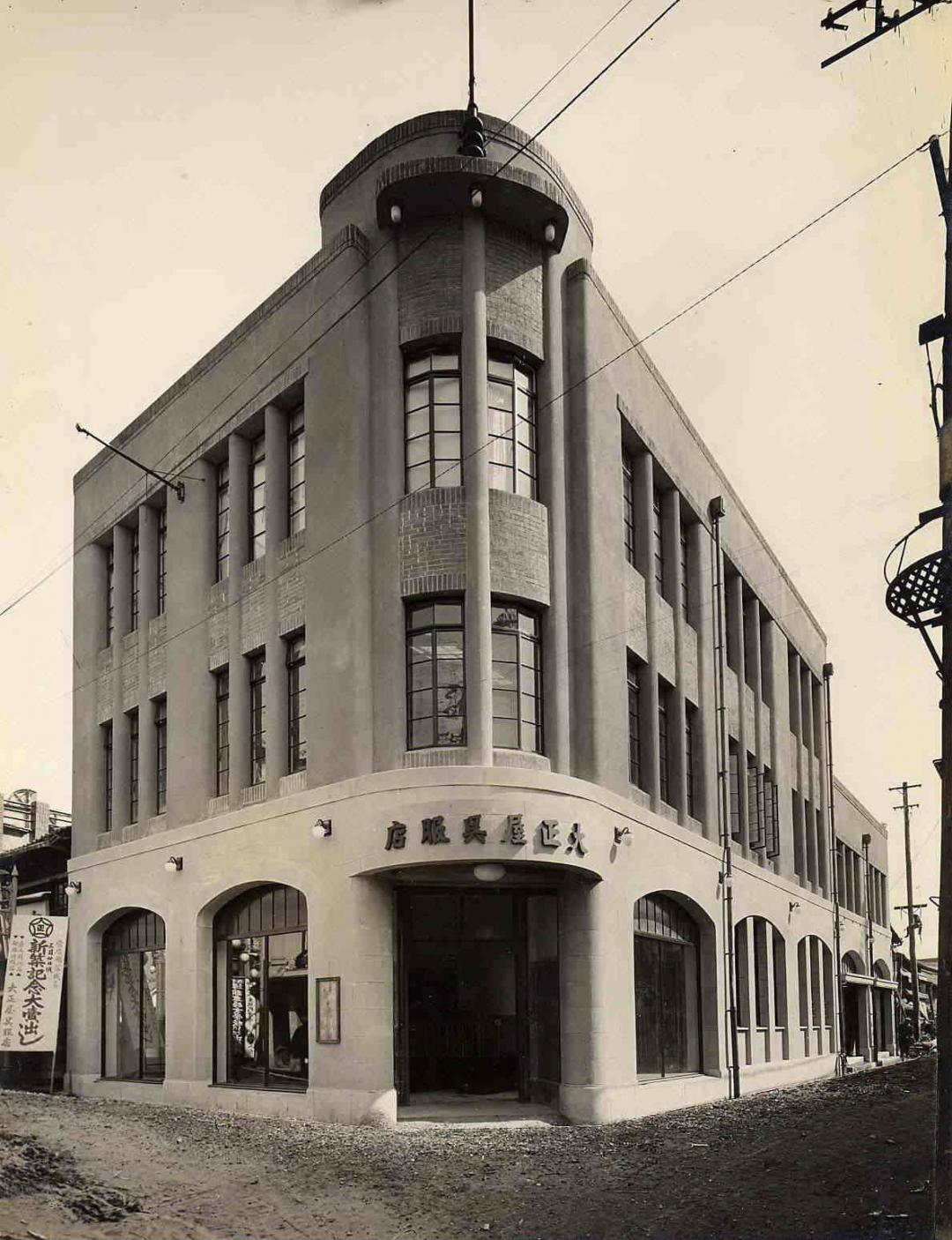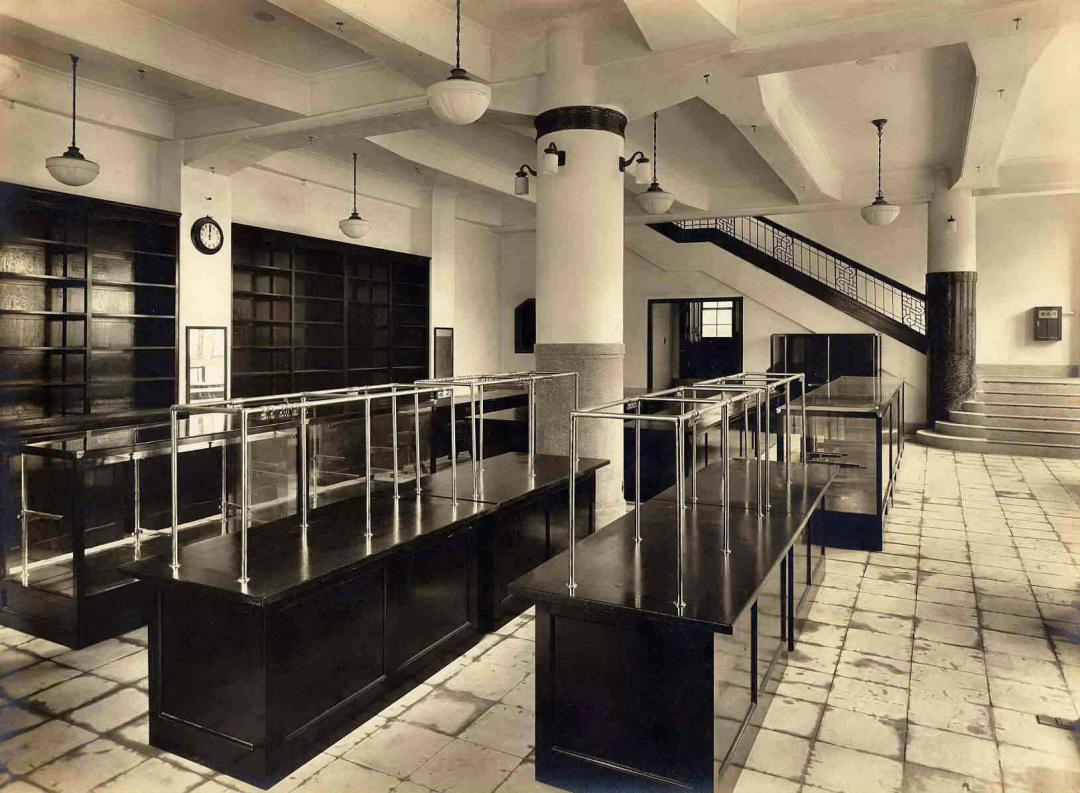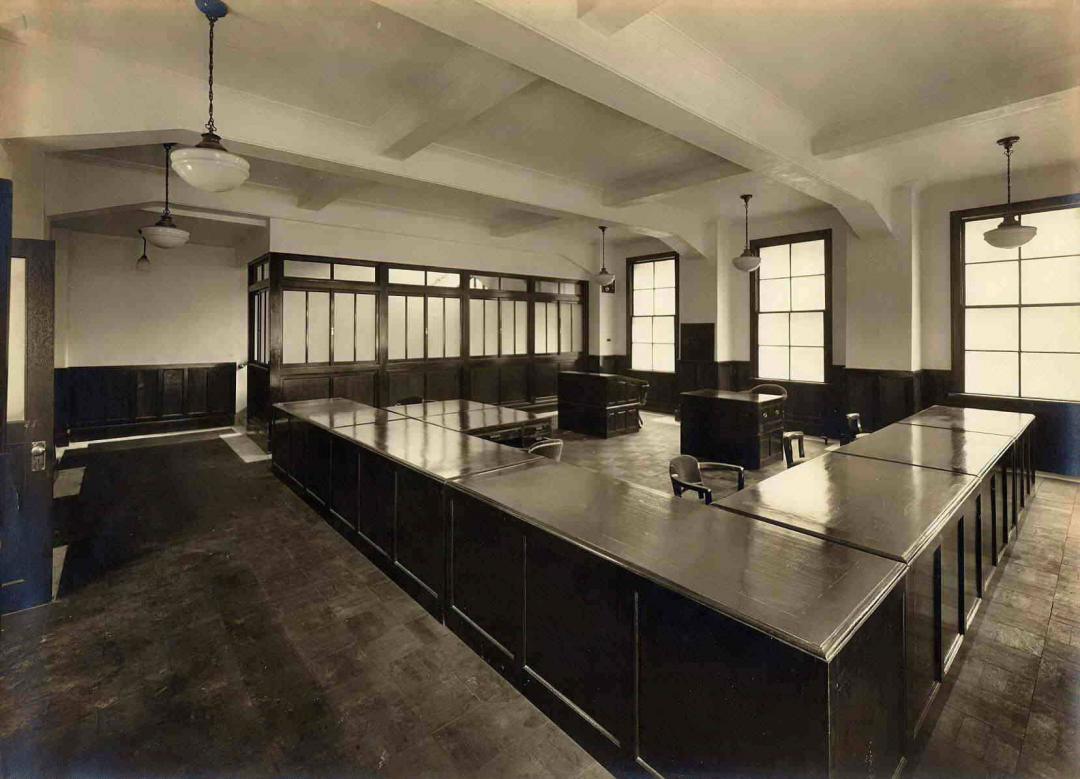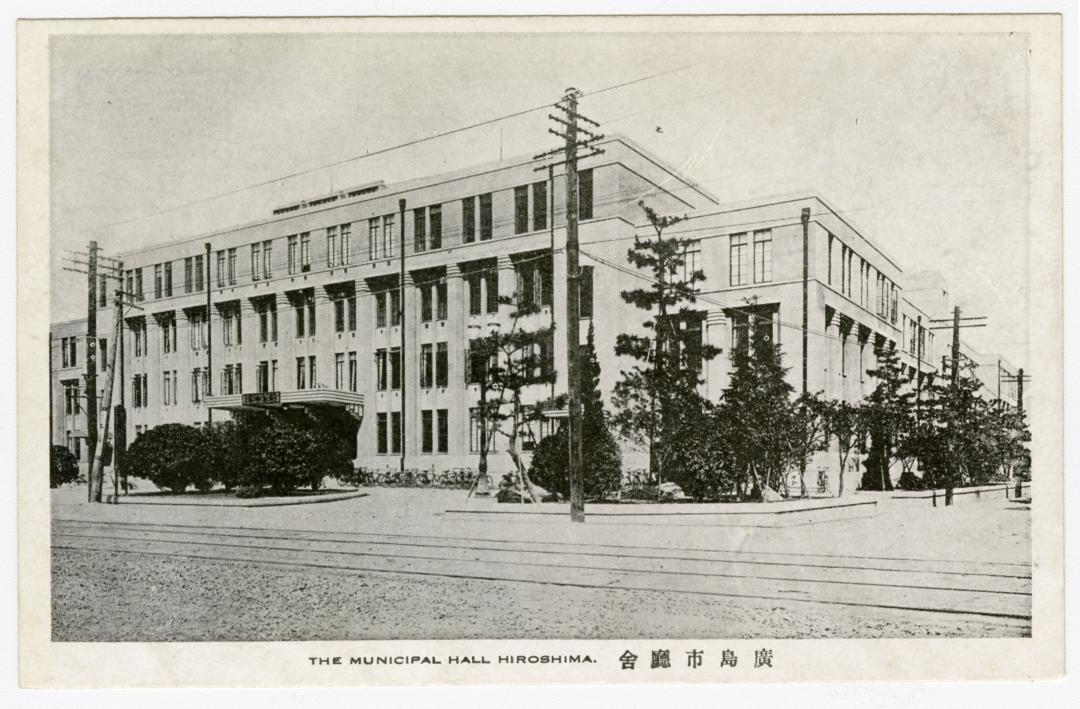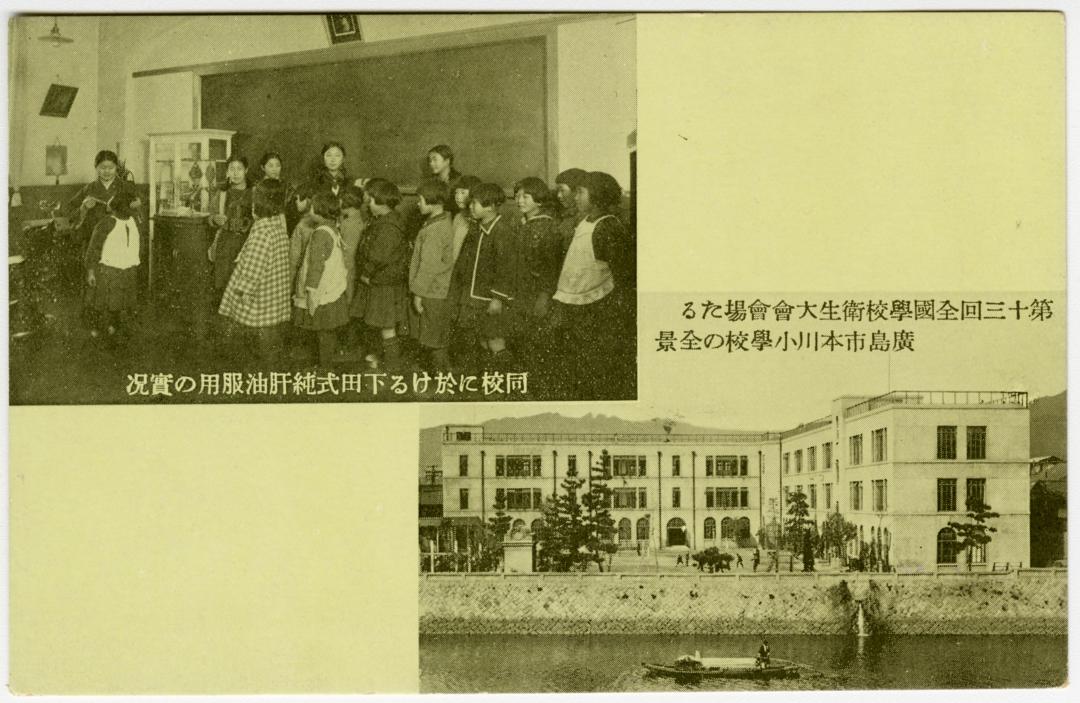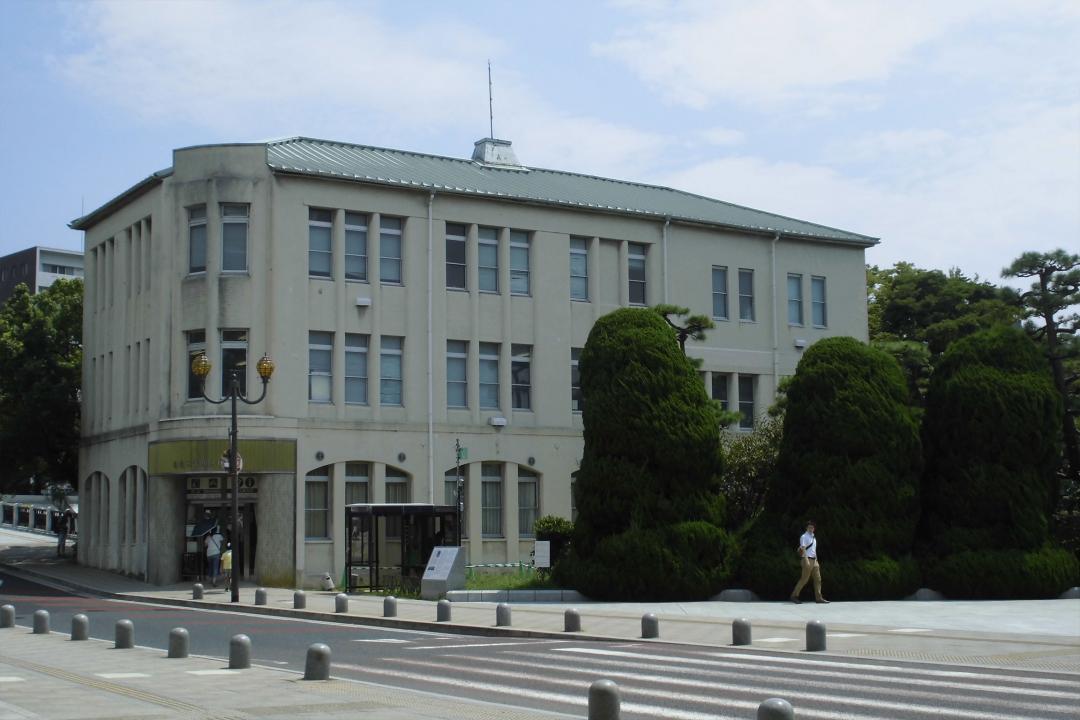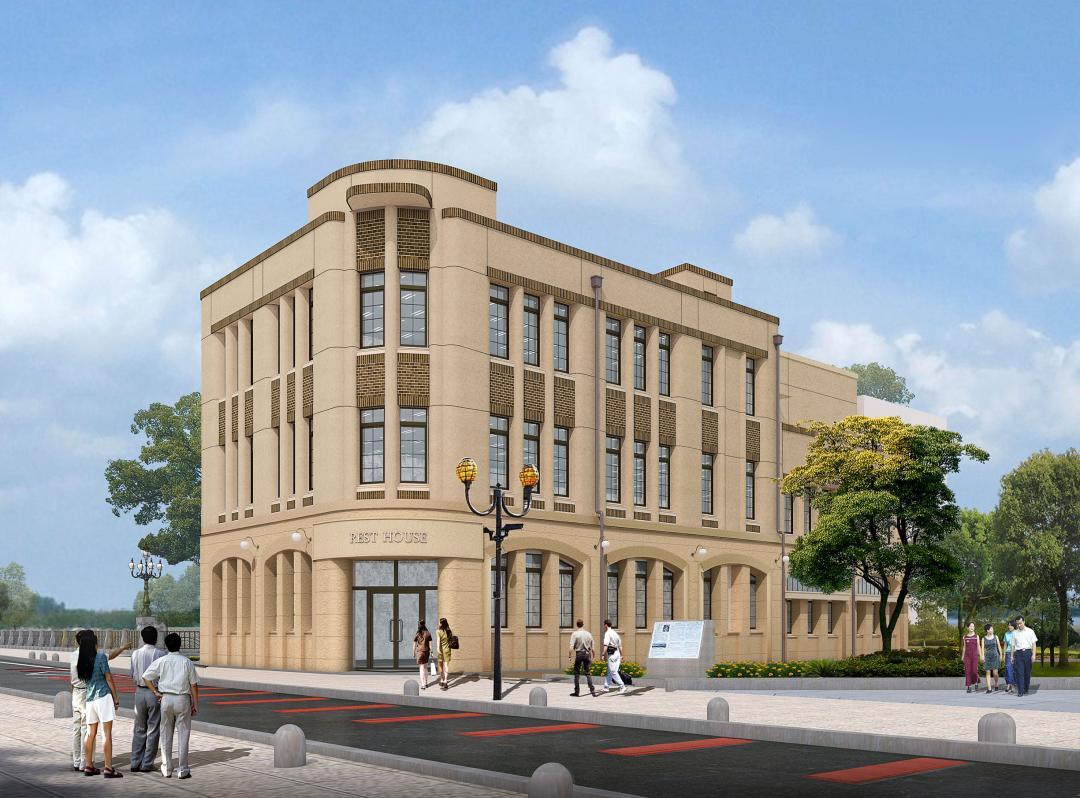❹ The History of the Rest House
The building known as the Rest House was first built as a kimono shop in a time when the area which is now Peace Memorial Park was a prosperous town. This building has stood witness to the history of the Nakajima district, changing its function, along with its name, from Fuel Hall to the Hiroshima City East Reconstruction Office, and finally, the Rest House.
The Taisho-ya Kimono Shop
The Latest in Modern Kimono Fashion in the Heart of Nakajima Hon-dori Street
The Taisho-ya Kimono Shop opened in 1912 with the financial backing of Nakatani Isuke Mercantile, a kimono wholesaler in Senba, Osaka. It would become one of the defining kimono shops in all of Hiroshima, fueled by the robust economic boom brought on by WWI. In 1929, the store moved from its old home in Saiku-machi (currently Ote-machi 1-chome, Naka-ku) to its newly built home in Nakajima Hon-machi (the building which would eventually become the Rest House).
Designed by Osaka-based architect Masuda Kiyoshi, the building was made of reinforced concrete with three top floors and one basement floor. With the arched windows on the first floor, and the procession of elongated windows decorated with scratched surface tiles on the second and third floors, the building stood out as a marvel of modern architecture amongst the tiled roofs of merchant shops and homes in Nakajima Hon-dori street.
The Pioneer of Earthquake-Proof Architecture in Hiroshima: Masuda Kiyoshi
Designer of the Taisho-ya Kimono Shop, Masuda Kiyoshi (1888-1977), was an architect based in Osaka. He designed many reinforced concrete (RC) buildings, and contributed to the widespread use of RC in architecture. Masuda’s designs placed importance on structural stability, as well as the minute details of all decorations, in a time during which earthquake-proof architecture wasn’t thought of.
In addition to the Taisho-ya Kimono Shop, he also designed three other buildings in Hiroshima: Hiroshima City Hall (built in 1928), Honkawa Elementary School (built in 1928), and Hiroshima Prefectural Agri-industrial Bank (built in 1931).
In addition to the Taisho-ya Kimono Shop, he also designed three other buildings in Hiroshima: Hiroshima City Hall (built in 1928), Honkawa Elementary School (built in 1928), and Hiroshima Prefectural Agri-industrial Bank (built in 1931).
Prosperity Amid Crisis
The year 1930 brought about the Showa Financial Crisis, a dark time of economic depression. Despite this, however, the Taisho-ya Kimono Shop remained a leader in Hiroshima kimono fashion since the day it opened.
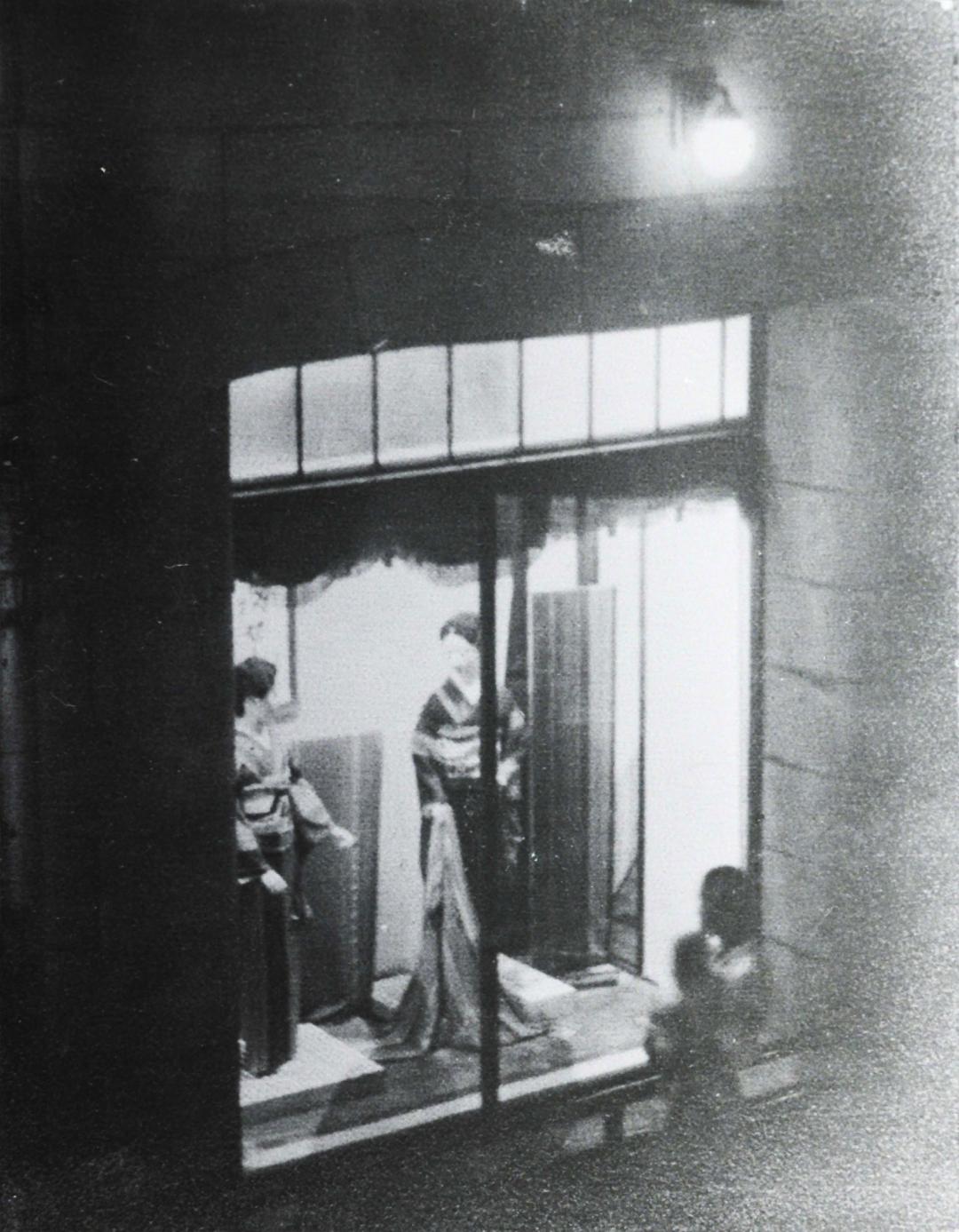
Display window
From the collection of Katayama Noboru
Courtesy of Cultural Promotion Division, Citizens Affairs Bureau, City of Hiroshima
During a summer kimono karamushi (a type of hemp fabric) textile sales event held in cooperation with a kimono wholesaler in Kyoto, Taisho-ya sold over 1500 rolls of fabric within a single week.
Sino-Japanese War and the End of Taisho-ya
However, things took a turn with the beginning of the Sino-Japanese War, and its effects were seen even in civilian life. With supplies dwindling, a rationing system was put in place, and one by one, staff members were drafted into combat.
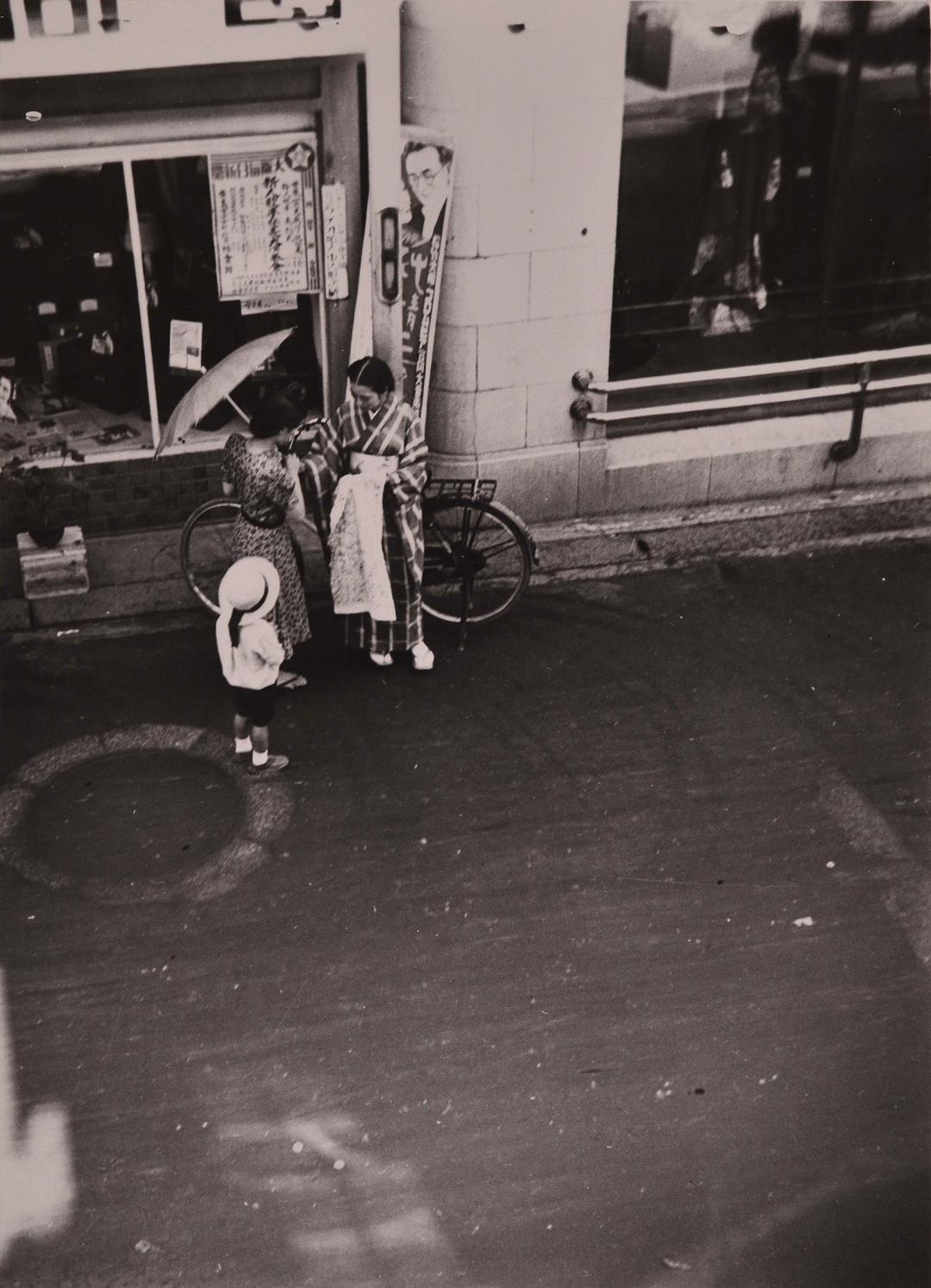
Collecting sen-nin-bari sen-nin-bari (one thousand stitch hand-embroidered belts given to soldiers for good luck) in front of Taisho-ya Kimono Shop
From the collection of Okuno Katsuhiko
Courtesy of Cultural Promotion Division, Citizens Affairs Bureau, City of Hiroshima
The war only grew worse, and with the call for restricting cloth and fabric purchases stronger than ever, the Taisho-ya Kimono Shop, almost devoid of products and staff, was forced to close their doors at the end of 1943.
Fuel Hall
Urged by the wartime government to take up residence in buildings which were fireproof to prepare for possible air raids, Taisho-ya became Fuel Hall, headquarters for the Hiroshima Prefecture Fuel Rationing Union, in June 1944.
It is on the morning of August 6, 1945, only one year since the building became Fuel Hall, that a single atomic bomb would detonate in mid-air, just 170 meters from this very building.
The atomic bomb decimated the Nakajima district, however Fuel Hall was one of the few buildings left standing. Early in the next year, repairs began on the building, such as the construction of a triangular wooden roof, and the building once again functioned as Fuel Hall.
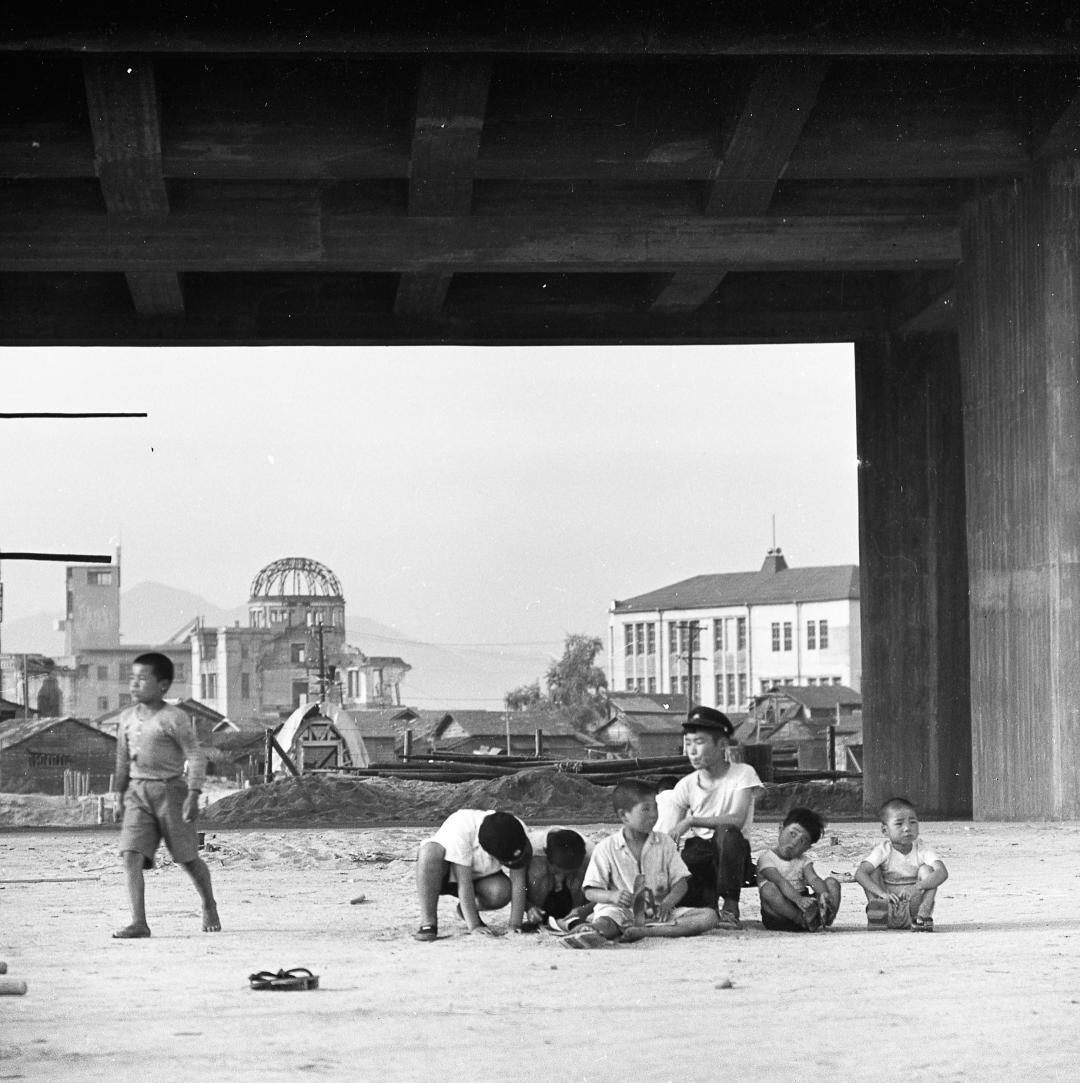
Children playing under the Peace Memorial Museum
Photo by Myoda Kōji
Courtesy of the Hiroshima City Municipal Archives
Hiroshima City East Reconstruction Office
With the construction of Peace Memorial Park, there were arguments for and against the demolition of this building. However, in March 1957, it was purchased by the City of Hiroshima and turned into the Hiroshima City East Reconstruction Office in charge of recovery and reconstruction of the eastern districts of the city.
Peace Memorial Park Rest House
In September 1982, the building was refurbished as the Peace Memorial Park Rest House. Beginning in 2018, the Rest House would once again undergo repair work and renovation to become the building that it is today.
Having come this far, it is safe to say that the Rest House will continue to stand as a reminder of the Nakajima district which once thrived here, of the ravages of war, and of the post-war recovery of Hiroshima.
2.The History of the Nakajima District
3.A Thriving Community: The Nakajima District Before the Bombing

